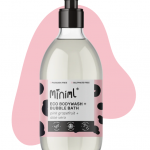
Intrinsic aging
This is the natural, biological aging that occurs in the skin witbout sun damage — and we have little control over it. (Although a healthy diet, regular exercise, plenty of sleep and fresh air and tackling stress will certainly help.) All of the organs in our body including skin — become intrinsically aged as the years tick by. Intrinsic aging causes major changes in our complexions: at 80, for instance, our skin is 30 percent less thick than at 18. In addition to the structural changes in the dermis and the epidermis, there are other changes that take place as we age: we sweat less as we get older, and there is decreased pigmentation — so older skin can be paler. There is also a loss of muscle tone and a relocation of the fat under the skin’s surface, which accounts for the cheeks sinking in as they lose their padding, while little pockets of fat settle in the jowls.

Extrinsic aging
Extrinsic aging, or photo-aging, was until quite recently believed to be a fast-forwarding of intrinsic aging. But differences between the two are now emerging. ‘Without the damaging effects of the sun, intrinsic aging only really starts to show from the age of 60 onwards,’ says Dr. Daniel Maes, Vice-President of Research and Development for Estée Lauder. But exposure to UV light and pollution speed up aging, due to the production of free radicals on the surface of exposed skin, damaging the cells. Their attack on the collagen and elastin fibers results in a rough, dry skin texture, deep wrinkles, uneven pigmentation and broken veins. At the same time, new skin cells may be damaged as they form. By the time they get to the outside world, they’re already weakened leaving skin even more vulnerable to future external damage. A vicious circle that speeds up the wrinkling and crepiness we think of as natural aging — but which is mainly linked with our exposure to the sun, pollution and smoking.







